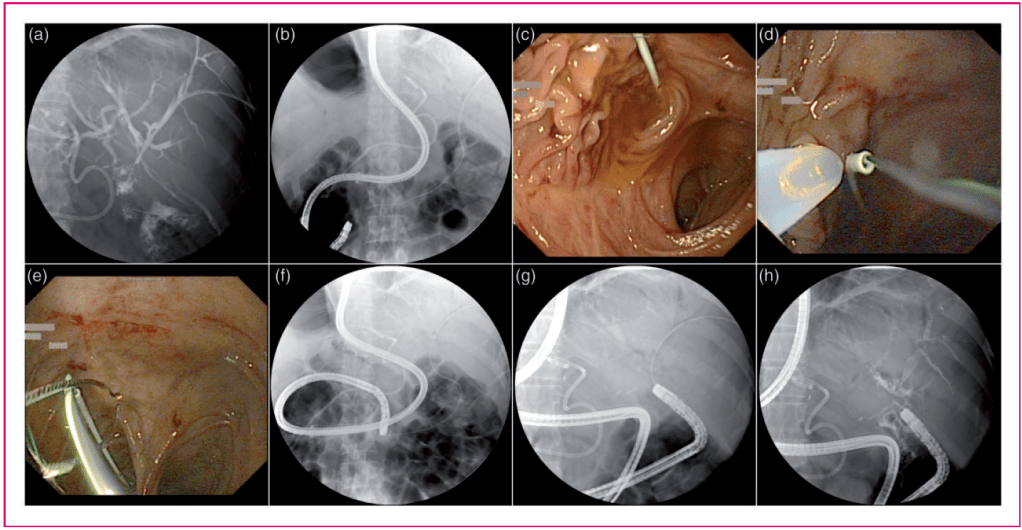Bokemeyer A, Müller F, Niesert H, et al. Percutaneous-transhepatic-endoscopic rendezvous procedures are effective and safe in patients with refractory bile duct obstruction. United European Gastroenterol J. 2019 Apr;7(3):397-404. Free full-text.
New findings:
- Percutaneous-transhepatic-endoscopic rendezvous procedures (PTE-RVs) offer a high technical success rate (80%) in patients with a previously failed endoscopic retrograde cholangiography, including patients with an altered gastrointestinal tract.
- Significantly fewer complications occur following PTE-RVs than following percutaneous transhepatic cholangiography (PTC) (16.6 vs 26.6%; p = 0.037); thus, PTE-RVs should be preferred over PTC alone in the case of a necessary percutaneous procedure for biliary interventions.

Figure 1. Imaging of a performed percutaneous-transhepatic-endoscopic rendezvous procedure (PTE-RV). (a–c) Guidewire placement via the transhepatic route into the intestinal lumen was performed. The conventional endoscopic intubation of the afferent limb with a single-balloon enteroscope failed. (d–h) An endoscopic snare was used to catch the transhepatic guidewire; thus, the endoscope could be advanced into the afferent limb up to the biliodigestive anastomosis to complete the RV procedure.
